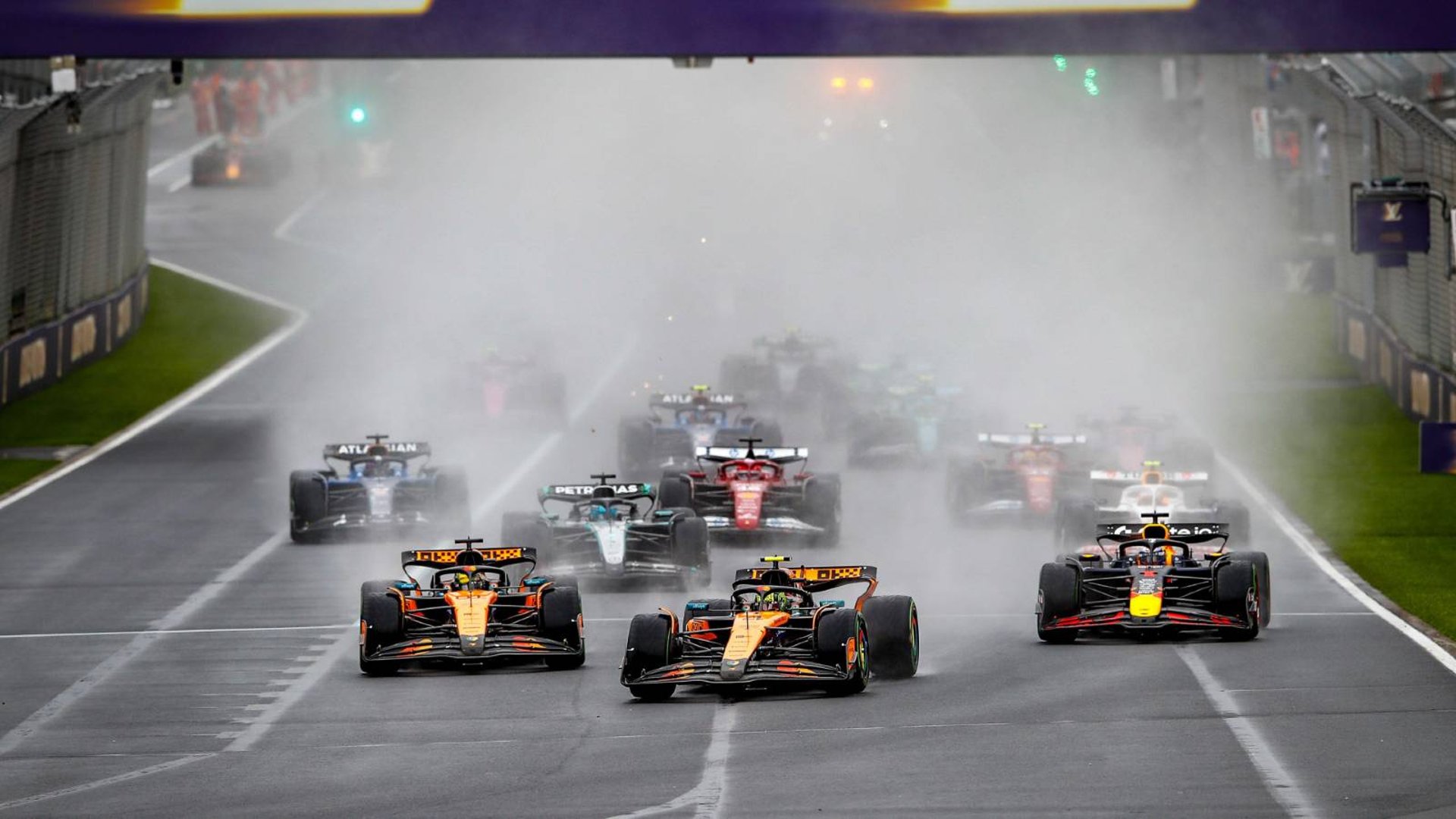
What I Wish I Knew Before Watching My First F1 Race (From A Rookie Fan)
First time watching F1? Learn what every rookie needs to know — from race weekend formats and pit stop strategy to DRS, team radio, and more.
Zeth Croft
6/5/202512 min read
Ahhhh, I remember my first Formula 1 race like it was yesterday — the 2025 Australian Grand Prix. I had no idea what I was getting myself into, but there I was, staying up until 12 a.m. to catch the live broadcast, even though I had to leave for vacation the very next morning. Sleep could wait. F1 had completely taken over my TikTok and YouTube Short feeds — the memes, the edits, the Max Verstappen Tu Tu Du Du clips — I was hooked before I even knew what a formation lap was.
And when those five lights went out… wow. The sound of the engines, the chaos into Turn 1, the sheer speed — I was locked in. It was total sensory overload in the best way possible.
But honestly? I had no clue what was going on half the time. I didn’t understand how they even determined the starting order. Why were some drivers backing out of corners in what looked like a perfect overtake chance? Why did pit stops seem so randomly timed? And what the heck did box box even mean?
Despite all the confusion, I loved it — and I quickly realized that while you don’t need to understand everything to enjoy an F1 race, knowing just a few key things can make your experience way more exciting.
So, if you’re about to watch your first F1 race (or just recently did), here’s everything I wish I knew before that adrenaline-filled night.
F1 Is A Full Weekend Event - Not Just A Race
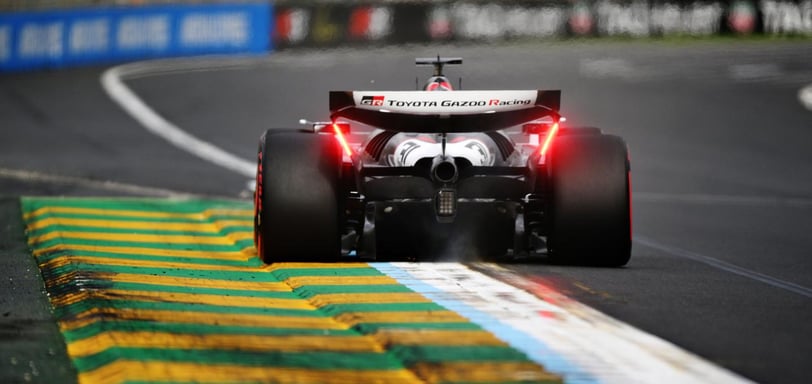

One of the first things I wish I had known is that a Formula 1 race isn’t just a one-day event — it’s a full three-day weekend experience, and the actual race is just one part of it.
Each Grand Prix weekend is made up of three key stages: Practice, Qualifying, and Race Day. If you only tune in for the race on Sunday, you’re missing most of the buildup and strategy that makes F1 so fascinating.
1. Practice Sessions (Friday & Saturday Morning)
The weekend kicks off with three practice sessions — FP1, FP2, and FP3. These sessions allow drivers to get familiar with the track, fine-tune their car setups, and test different tire compounds. It’s a critical time for the teams to gather data, especially if the track is brand new to the calendar or weather conditions are unpredictable.
Even though nothing is officially on the line during practice, it gives you a sneak peek at which teams are looking strong and who might be struggling.
2.Qualifying (Saturday Afternoon)
Arguably my favorite part of the whole weekend and the most intense.
Qualifying is broken into three sessions — Q1, Q2, and Q3 — and drivers are eliminated as the sessions progress. Everyone is pushing to set the fastest lap possible, often within just one or two attempts, making for edge-of-your-seat drama.
At the end of qualifying, the grid is set: the fastest driver earns pole position (starting first), while others line up based on their lap times. Where a driver starts can hugely affect their chances on race day, especially on tighter circuits like Monaco or Singapore.
3. Race Day (Sunday)
Finally, it all leads up to Sunday’s race. This is the main event, but it’s also the conclusion of a carefully built-up story arc. Each driver and team brings their strategy, tire choices, and game plan into play.
From the five red lights at the start to the final lap, every second counts. But what makes the race more meaningful is the context — the drama that unfolded during qualifying, the practice pace, and any penalties or upgrades that may affect performance.
Pit Stops and Strategy Are Make Or Break
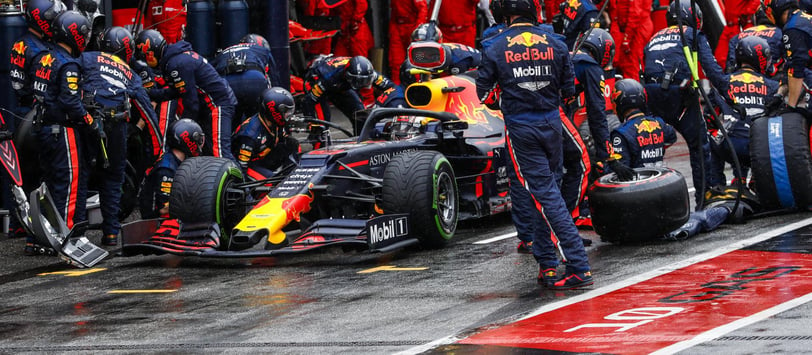

During my first Formula 1 race, I assumed pit stops were just simple tire swaps—a quick grab-and-go. But I quickly learned that in F1, pit stops are where races can be won or lost. They’re not just mechanical routines; they’re a crucial part of race strategy and a prime example of how F1 is truly a team sport.
Yes, a Formula 1 pit stop is a really fast tire change, usually taking less than two seconds, but there’s far more to it than speed alone.
Each driver is required to use at least two different tire compounds during a race—typically a combination of soft, medium, and hard tires. Each compound offers different levels of grip and durability, and choosing the right one at the right time is a strategic decision that can impact the entire race outcome.
Pit stops are also where tactical moves like the undercut and overcut come into play:
Undercut: When a driver pits earlier than the car ahead, aiming to take advantage of fresh tires and gain track position when the rival pits later.
Overcut: When a driver stays out longer on older tires, pushing hard in hopes of jumping ahead while the opponent is in the pits.
F1 pit crews operate with incredible precision. They’re highly trained and work within razor-thin margins. A stuck wheel, miscommunication, or poorly timed release can completely derail a driver's race. Just look at Max Verstappen’s Spanish Grand Prix, where a pit stop error led to the wrong tire compound being fitted. That small mistake, combined with other factors, dropped him to P10—a rare setback for the reigning World Champion.
Team Radio and Call Outs
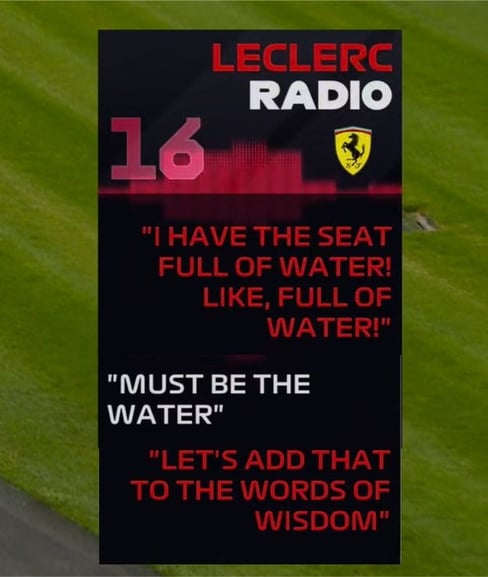

One of the biggest surprises during my first F1 race wasn’t what I saw on the track — it was what I heard in my headphones.
I had no idea that Formula 1 broadcasts included live team radio messages, and honestly, that changed everything for me. Hearing the drivers speak directly to their engineers in real time added a whole new layer of drama, strategy, and sometimes pure comedy to the experience.
Team radio gives you front-row access to a driver’s raw emotion — whether it's frustration, confusion, or absolute confidence. You’ll hear them talk about tire grip, question strategy, beg for information, or just flat-out vent. And if you think these world-class athletes always keep their cool… they don’t.
Take this moment for example:
“I am stupid.” — Charles Leclerc, Baku 2019
After crashing out during qualifying, Leclerc owned up to it on the radio in a painfully honest moment that instantly became a meme.
Or this gem:
"must be the water." - Charles Leclerc's engineer,
And it’s not just for laughs — radio messages often give you insight into what’s happening before the commentators even mention it. You’ll catch things like:
Drivers disagreeing with pit strategy in real time.
Engineers giving live updates about gaps and tire temps.
Emergency calls like, “Box, box!” (That’s F1-speak for “come into the pits now.”
It’s also where you start to see which drivers are calm under pressure, and which ones wear their hearts on their sleeves. Some are total strategists. Others are pure adrenaline and instinct.
As a rookie fan, I’d recommend keeping an ear out for these during your first few races. If you're watching through F1 TV or catching post-race highlights on YouTube, look for team radio compilations — they’re gold.
It's More Than Just Who Wins
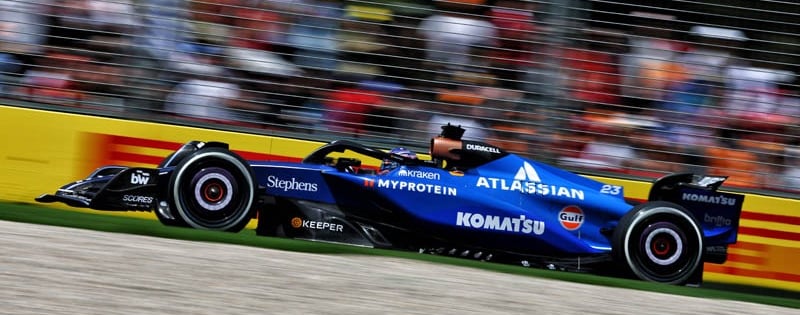

Before I really got into F1, I assumed the entire point of watching was to see who finished first. Simple, right? Fastest car + best driver = win. End of story.
But here’s what I didn’t realize until I actually started watching races: some of the best moments in F1 happen far away from the winner’s circle.
F1 isn’t just about the podium — it’s about every story happening up and down the grid. From dramatic comebacks and underdog performances to epic overtakes and battles for a single point, the real magic is often unfolding in places the casual viewer might ignore.
In Formula 1, only the top 10 drivers score points. That means if a driver finishes in 10th place, they still walk away with a championship point — and sometimes, that one point is everything.
I’ll never forget watching a midfield driver fight tooth and nail just to secure 8th place — and celebrating like they’d won the Grand Prix. Why? Because that result could mean:
A crucial step in the constructor’s championship
A personal best finish
Redemption after a tough few races
A job-saving performance for next season
Drama runs deep in F1, For example, I once watched Fernando Alonso hold off faster cars for lap after lap with some of the most defensive driving I’d ever seen — all just to protect P6. He didn’t win, but you would’ve thought he did based on how hyped the fans were.
These kinds of battles — for 6th, 9th, even just finishing the race after an early spin — are what make F1 so compelling. There are always multiple races within the race.
The more you learn about the season as a whole, the more each little moment matters. Is a driver trying to beat their teammate? Is a team in a budget fight for 4th place in the constructors’? Is this someone’s last chance to prove themselves before losing their seat?
Once you start to see these storylines unfold, the results at the top start to feel like just one piece of the puzzle. You’ll find yourself just as excited watching an underdog secure P9 as you are seeing who wins.
The Rules Can Be Confusing (But Worth Learning)
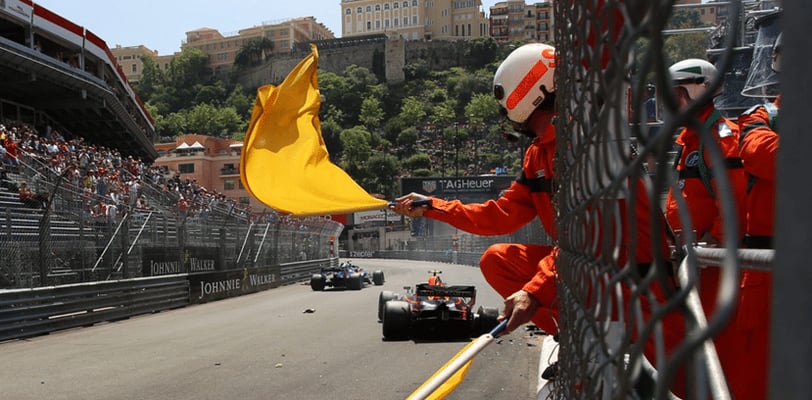

I’ll be honest — the first time I watched an F1 race, I was so lost. There were colored flags waving, penalties being handed out, and commentators throwing around terms like “DRS,” “parc fermé,” and “track limits” like we were all supposed to know what they meant.
At first, I figured I’d just ignore it and focus on the racing. But as I kept watching, I realized something important: the rules are what make Formula 1 so strategic and exciting. Once I started learning the basics, the races became a lot more fun to follow.
Let's talk flags!
Flags in F1 are the most immediate way race officials communicate with drivers. Here are the ones that confused me at first — and now I actually look for them:
Yellow Flag – Caution! There’s danger on the track (like a crash or debris). Drivers must slow down and overtaking is not allowed.
Red Flag – Race stopped completely. This happens for serious crashes or dangerous conditions (like heavy rain).
Blue Flag – Shown to a slower driver being lapped — they must move aside for faster cars.
Black and White Flag – A warning for bad behavior (like pushing someone off track). It’s basically F1’s version of “you’re on thin ice.”
What is DRS, and Why Is Everyone Talking About It?
DRS stands for Drag Reduction System, and it's a tool that allows cars to temporarily increase straight-line speed by opening a flap on the rear wing. But there’s a catch — it can only be used:
In designated DRS zones
When a driver is within one second of the car in front
This rule makes overtaking more exciting and gives trailing drivers a fighting chance. Once you start noticing DRS battles, you’ll never look at straight-line speed the same way.
Penalties Are A Big Deal
Unlike other sports where fouls just lead to warnings, penalties in F1 can completely change the outcome of a race. A few common ones to look out for:
5 or 10-second time penalties – Added to a driver’s total time or served during a pit stop.
Drive-through or stop-and-go penalties – Much harsher, usually for serious infractions.
Grid penalties – These move a driver back several places on the starting grid (common after engine or gearbox changes).
Sometimes, these penalties aren’t obvious right away. You might see a driver cross the finish line in 4th, only to drop to 7th after penalties are applied. It’s dramatic and kind of brutal — but also adds to the tension.
Other Terms You’ll Hear (And Eventually Love)
Track limits – Drivers must stay within the white lines. Exceeding them can lead to warnings or penalties.
Parc fermé – After qualifying, teams can’t make major changes to the car before the race — this keeps things fair.
Formation lap – A warm-up lap before the race starts. It’s more important than it looks!
Undercut/Overcut – Strategy terms related to pit stops — they’re like a mini chess game during the race.
Earning the rules might seem overwhelming at first, but it’s 100% worth it. They’re what transform F1 from a high-speed parade into a deeply strategic sport full of risk, drama, and split-second decisions. And trust me — once you understand them, even a “quiet” race becomes absolutely thrilling.
Pick A Team (Even If You Change Later)
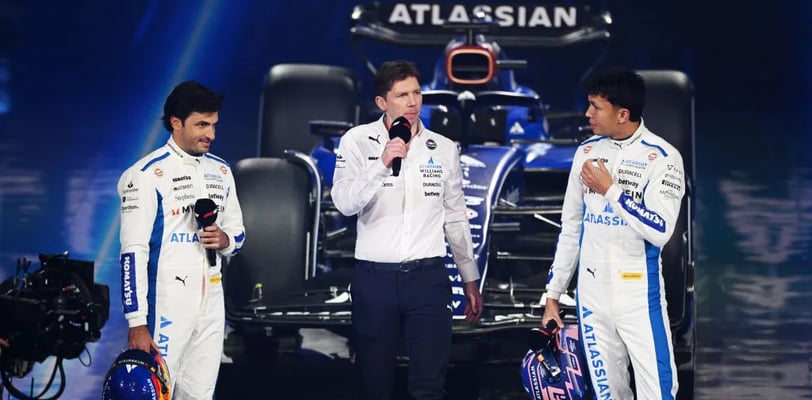

For my first race I was routing for the guy and team that got me in into F1 in the first place, Red Bull.
They were winning, Max Verstappen was dominating, and let’s be real — the energy drinks, the aggressive branding, and the fact that every F1 meme seemed to include them just made them seem like the team to support. It felt like the safe, exciting pick. And for a while, it was.
But here’s what no one told me: your favorite team might change — and that’s okay.
Because somewhere along the line, I fell in love with Williams.
It didn’t happen all at once. I didn’t just wake up one day and switch allegiances. It was gradual — a slow burn of underdog grit, classic F1 heritage, and seeing drivers like Alex Albon put in incredible drives for a team that doesn’t always get the spotlight.
There’s just something about rooting for a team that’s clawing its way back up the grid. You feel every point they earn, every Q3 appearance, every gutsy overtake. You’re not watching to see them dominate — you’re watching to see them rise. And when they do? It feels like you win too.
That kind of emotional payoff is hard to get when you're rooting for a team that’s already expected to win every weekend.
Having a team to follow makes every race more personal. You start paying attention to their strategy, their development, even their radio calls. You get invested in the drivers, the engineers, the vibe.
But more than that — it connects you to the sport. Suddenly, you’re not just watching 20 drivers go in circles. You care. You cheer. You scream when a bad pit stop ruins everything.
I started my rookie F1 season cheering for the team on top. Now I find myself yelling at the screen when Williams is fighting for P9. And honestly? I wouldn’t have it any other way.
So if you’re trying to pick a team — go with your gut. But be ready: F1 has a way of surprising you. And sometimes the story you end up loving the most isn’t about winning. It’s about believing.
Midfield Battles Are Often The Most Fun
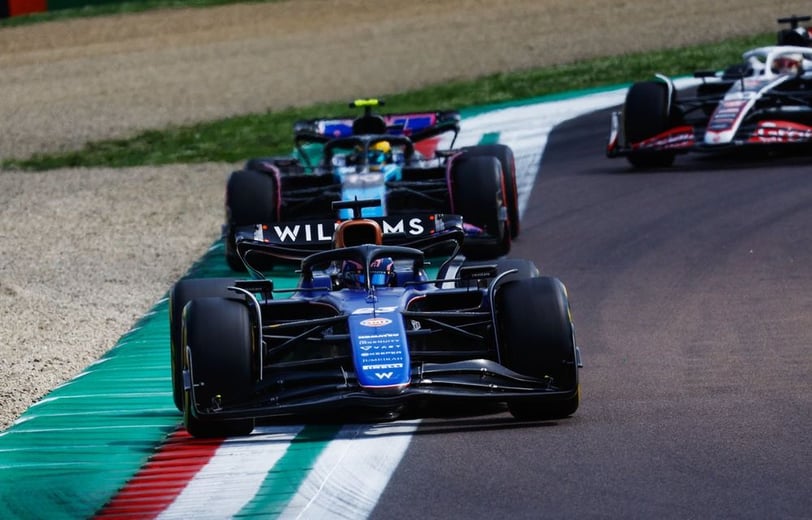

When I first started watching Formula 1, I thought all the action happened at the front of the pack. After all, that’s where the TV cameras usually focus, right? The pole sitter, the guy chasing P1, the final sprint to the checkered flag — that’s where the excitement should be.
But the more races I watched, the more I realized: some of the best racing in F1 is happening in the midfield.
While the front-runners (usually McLaren, Red Bull, or Mercedes) are managing tire wear and calculating strategy with precision, the midfield is often just vibes and violence. Drivers fighting for P6 like it’s a championship. Divebombs into Turn 1. Three-wide battles into tight corners. Unexpected overtakes, contact, DNFs — it’s unpredictable, raw, and ridiculously entertaining.
And because the midfield is so closely matched, every weekend feels like a reset. One race Alpine is on fire, the next it’s Haas making headlines. There’s more variability, more surprise, and a lot more heart.
In the midfield, a single point can mean the difference between millions in prize money — or finishing last in the Constructors’ Championship. That’s why you’ll see drivers throw everything into securing 10th place like it’s a podium.
It’s also where some of the most aggressive and emotional racing happens. You’ll see:
Veteran drivers trying to prove they still belong.
Rookies desperate to make their mark.
Teams gambling on bold strategies to move up the field.
I’ll never forget watching Alex Albon defend for what felt like half the race to hold on to P7 for Williams. No, it wasn’t a win. But it felt like one.
If you’re new to F1, keeping your eyes on the midfield is a great way to get familiar with the grid. It’s where the camera might not always go, but where the real stories often unfold:
Comebacks after early crashes
Clutch pit stop calls
Heartbreaking mechanical failures right before scoring points
These are the moments that get you emotionally hooked.
So yes — seeing a driver win from pole position is cool. But trust me, watching an underdog fight tooth and nail for a few hard-earned points? That’s where the real passion lives. Midfield madness is where I became a fan of the sport — not just a spectator.
Final Thoughts from One Rookie to Another
If there’s one thing I’ve learned since watching my first Formula 1 race, it’s that this sport is so much more than fast cars and checkered flags. It’s strategy, chaos, personalities, heartbreaks, and comebacks — all happening at 200mph.
I went into my first race just hoping to figure out who was winning. I came out completely obsessed with tire compounds, radio drama, and whether Williams could score a point. The more I watched, the more I realized that the beauty of F1 isn’t in knowing everything — it’s in discovering something new every weekend.
So if you’re new to F1, don’t stress about getting it all at once. Pick a team (even if you change later). Cheer for a midfield battle like it’s the final lap in Monaco. Laugh at the chaos on the radio. Google the rules mid-race. That’s what being an F1 rookie is all about.
And hey — if you're already hooked and found yourself nodding along, you're officially not alone. Welcome to the grid.
